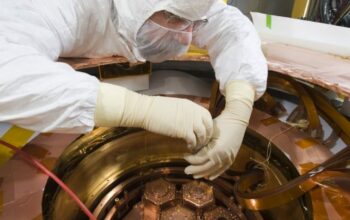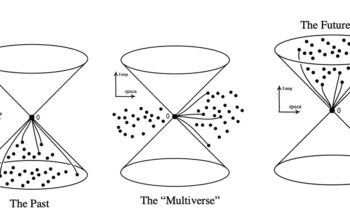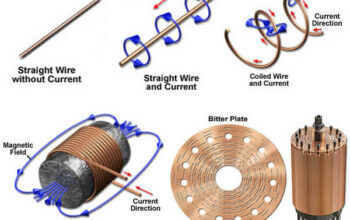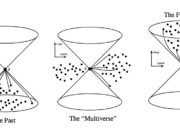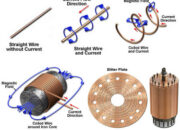The concept of utilizing neutrinos in the context of nuclear disarmament is as intricate as the subatomic particles themselves. Neutrinos, often described as the “ghost particles” of the cosmos, possess an enigmatic nature that defies conventional comprehension. With their minuscule mass and neutral charge, they traverse matter with such ease that their mere presence is often imperceptible. This intriguing characteristic lends itself to a rich exploration of whether these elusive entities could indeed play a role in dismantling nuclear weapons.
To delve into this subject, it is essential to first illuminate the nature of neutrinos. These fundamental particles, which arise predominantly from nuclear reactions, such as those occurring in the sun or in supernovae, are omnipresent. Trillions of neutrinos pass through our bodies every second, undetected. Their interactions with matter are notoriously feeble—a trait that forms both the crux of their potential utility and the basis for skepticism regarding their applicability in weapon disarmament.
At the heart of nuclear weapons lies the principle of nuclear fission—an exothermic reaction where the nucleus of an atom splits into smaller parts, releasing substantial amounts of energy. Traditionally, methods aimed at disarming nuclear devices involve physical dismantlement or the deployment of advanced technologies designed to intercept or neutralize these weapons. Herein lies the intriguing query: can neutrinos alter the fabric of nuclear weaponry?
The proposition hinges on understanding how a neutrino’s interaction could influence nuclear fission processes. Within the confines of an atomic nucleus, the delicate balance of forces is maintained by the interplay of protons and neutrons. When exposed to a neutrino, theoretically, alterations in this balance might catalyze destabilizing conditions. While various models suggest that neutrinos could impact weak nuclear forces, the actual mechanisms are shrouded in complexity and uncertainty.
However, empirically harnessing neutrinos for the purpose of disarming nuclear arsenals poses formidable challenges. The fundamental nature of neutrinos is such that they rarely interact with matter—a property that, paradoxically, both limits their destructive capability and renders them exceedingly difficult to manipulate. The vast majority of neutrinos would simply pass through any material target without eliciting a reaction, akin to a whisper in a bustling amphitheater, audible only to a discerning ear.
In contemplating possible methodologies, researchers have speculated about techniques that might amplify the interactions of neutrinos with nuclear materials. These approaches often center on the creation of high-intensity neutrino beams—hypothetical constructs that would require unprecedented advancements in particle physics and engineering. Even with such beams, the efficacy of neutrinos in dismantling the atomic structure of nuclear warheads remains a contentious topic of debate.
Moreover, one must consider ethical and strategic implications. The nuclear deterrent theory hinges upon the premise that the mere possession of nuclear weapons is sufficient to deter aggression. Proposing a method to neutralize such weapons brings forth a cascade of geopolitical ramifications. The notion of utilizing neutrinos as a weapon of peace could be perceived as naive or even hubristic. The potential for abuse, miscalculation, or unintended consequences looms large.
Furthermore, there is an inherent irony in relying on a particle that is so fundamentally elusive and indifferent to interaction. Neutrinos, in their continuous journey across the universe, do not discriminate between friend and foe. This quality evokes a metaphorical reflection on the challenges of achieving global disarmament. Just as neutrinos meander aimlessly, the path to disarmament can appear haphazard, punctuated by disputes and misunderstandings.
Yet, amidst these considerations, the allure of exploring neutrinos as a disarmament tool offers insights into the broader realms of particle physics and international relations. It exemplifies humanity’s enduring quest to reconcile the dichotomies of destruction and preservation. The prospect of leveraging such a fundamental aspect of the universe to change the trajectory of human conflict reflects an imaginative hope—a yearning for a world where warfare is rendered obsolete through scientific ingenuity.
In the quest for innovative solutions, interdisciplinary collaboration will be indispensable. Physicists, engineers, and policymakers must unite to explore this uncharted territory. While the current understanding may suggest that activating neutrinos to dismantle nuclear weaponry may be mere folly, it is imperative to tread the line between skepticism and curiosity. Any technological advancement likely stems from the pursuit of knowledge rather than the immediate execution of practicality.
In conclusion, while the hypothesis that neutrinos could dismantle nuclear weapons is far from being substantiated and presents a mosaic of scientific complexities and philosophical quandaries, exploring this idea embodies a larger truth about humanity’s relationship with technology. The interplay between matter and the manifestation of peace is a narrative as old as civilization itself. Whether this enigma of nature can metamorphose into a weapon of reassurances remains to be seen, but the dialogue it engenders may ultimately prove invaluable in the pursuit of global harmony.


